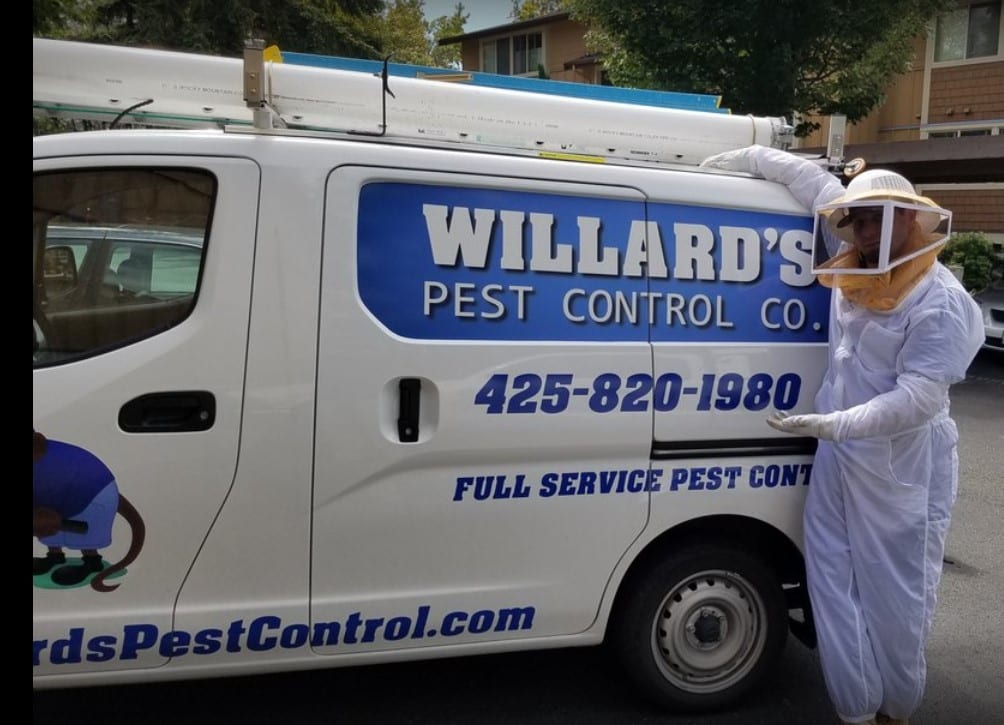The term wasp is used to refer to several bee/wasp species that can be a problem in the Pacific Northwest. Both are solitary wasps deriving their names from the types of nests they build and are considered beneficial insects. While both species of wasp are typically docile, calling a wasp exterminator who uses the proper equipment and protective clothing is imperative.
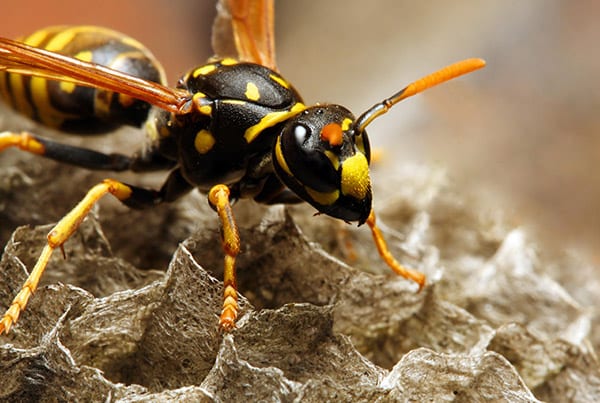
Wasp Appearance
- Size
- Mud Dauber Wasp – 1″ in length
- Paper Wasp – 5/8″ – 3/4″ in length
- Color
- Mud Dauber Wasp – Solid steel blue or black with some specifics with additional yellow markings.
- Paper Wasp – Most are dark brown in color with yellow markings. Some appear similar to yellow jackets in coloration.
- Body
- Mud Dauber Wasp – Long and slender with a narrow, thread-like waist.
- Paper Wasp – Wasp like with 6 long legs. Their waist is slimmer, more pinched than those of yellow jackets.
- Wings
- Mud Dauber Wasp – Clear, dark wings
- Paper Wasp – Black wings
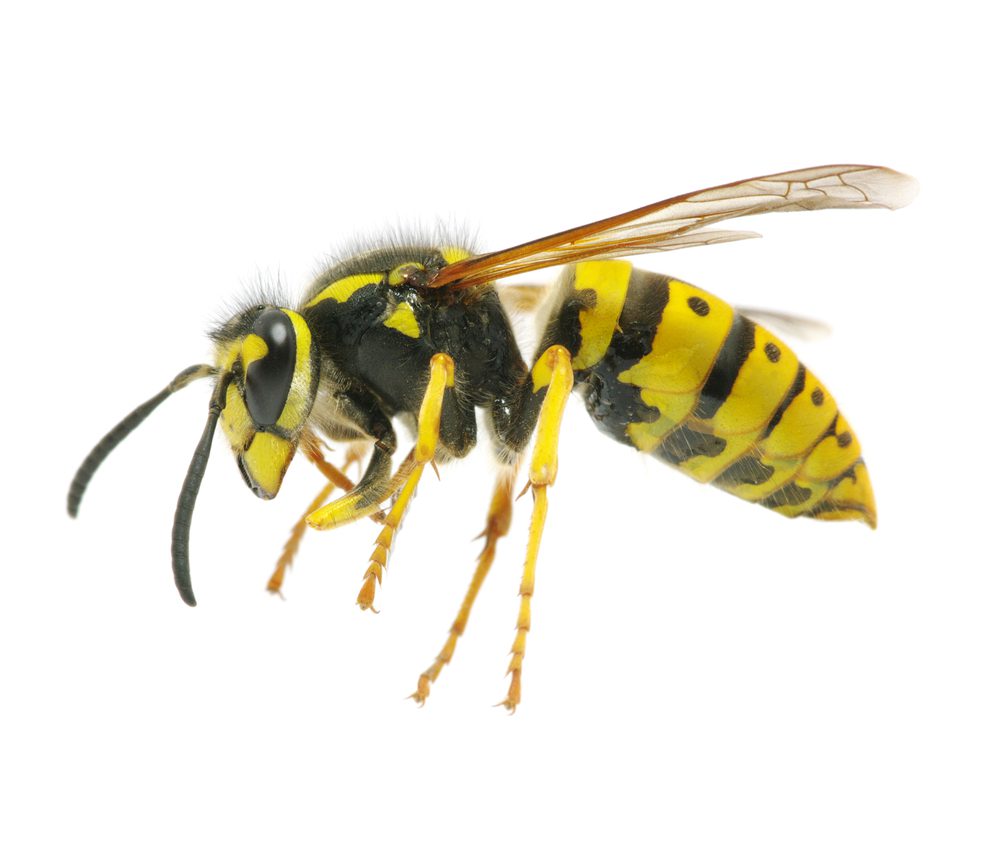
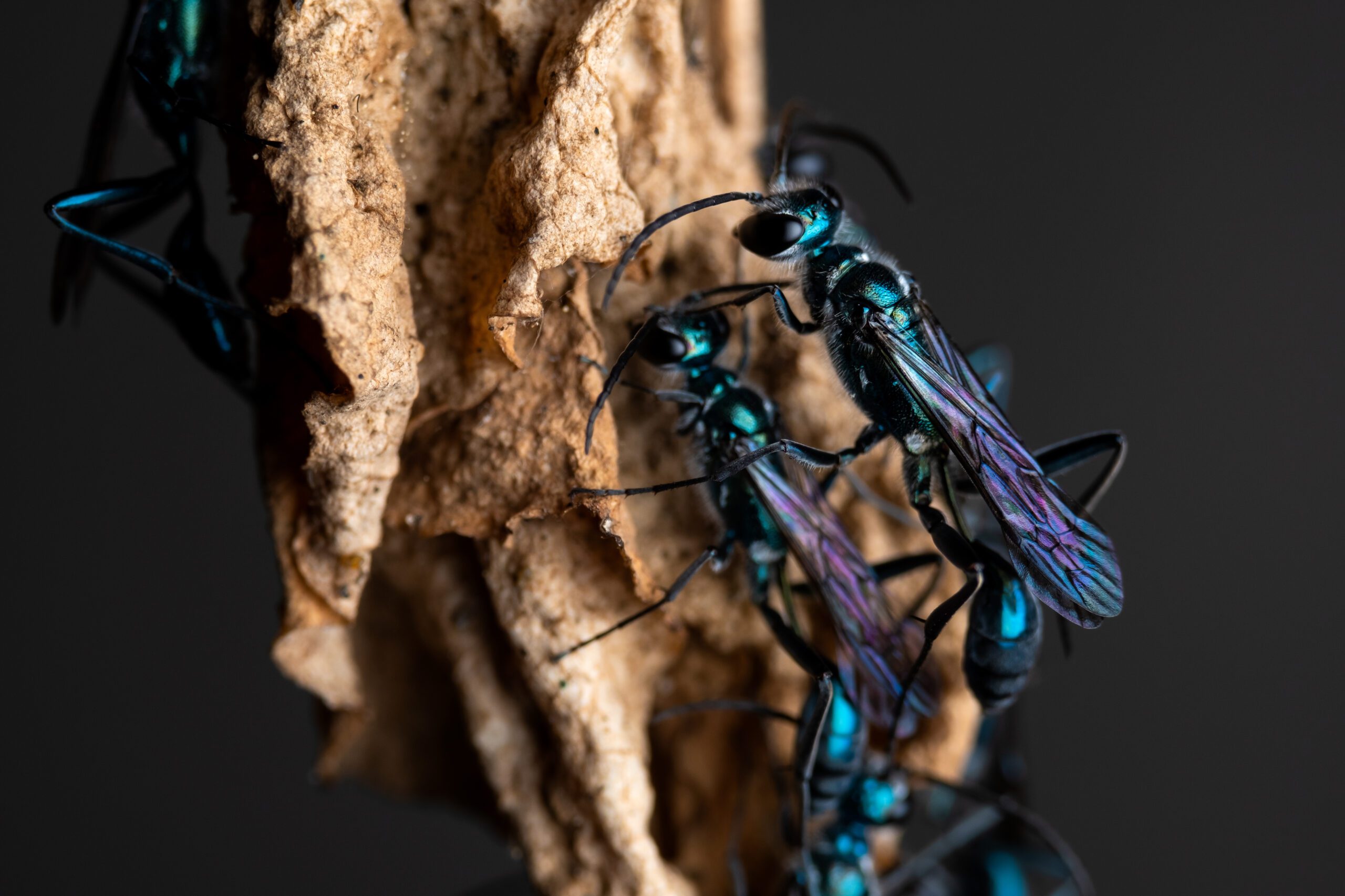
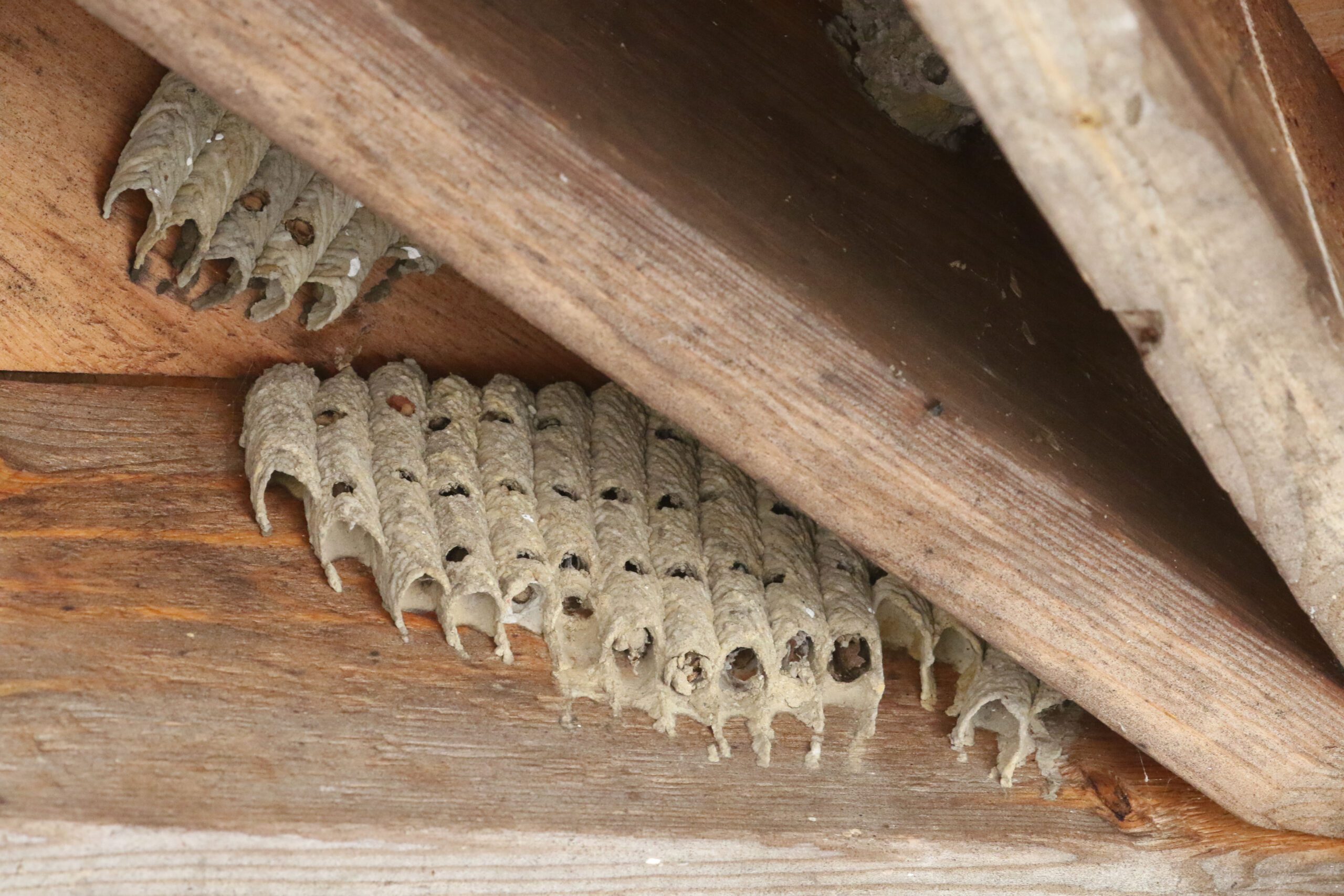
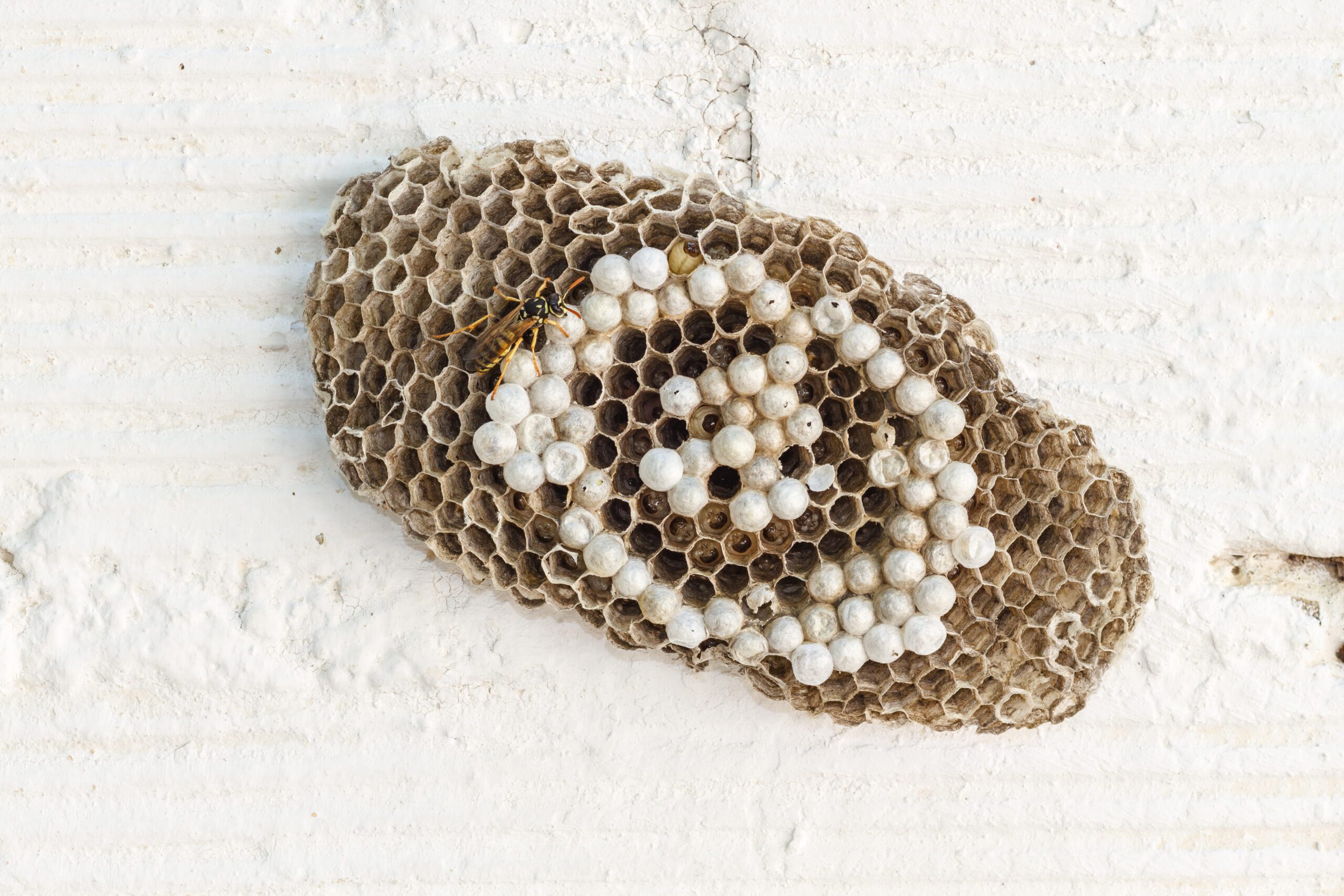
Wasp Behavior
Attacks
Mud Dauber wasps are fairly docile and rarely sting. They will sting if they are mishandled.
Paper wasps are not aggressive species but will sting if they feel their nest is threatened.
A wasp sting can cause allergic reactions in humans.
Habitat & Nests
Mud Dauber wasp nests constructed by the female wasps. They carry mud balls from puddles to the location of the nest – constructing tubes of mud. The mud wasp nest can typically be found in sheltered areas such as barns, garages, and eaves of houses.
A Paper wasp nest can be found in protected areas due to the nest’s fragile nature – with wasp infestations typically in attics, eaves of houses, window sills, and more. The fertilized females collect wood fiber from plants to chew up and form hexagonal cells. Paper wasp nests typically contain up to 200 hexagonal cells. The nest can resemble an upside-down umbrella and, unlike yellow jackets or hornet nests, the hexagonal storage cells are visible from the outside of the nest.
Wasp Lifecycle
Upon completion of the mud nest, Daube Mud wasps sting and paralyze insects or spiders to serve as for the larvae. Placing the prey in the nest, she deposits a single egg on the prey and then seals the mud tube. After hatching, the larvae feed on the prey left and emerge from the tube to start the process over again.
After mating, the Queen bee begins to build a new paper nest in a protected area. Once completed, she fills the cells with captured, pre-chewed caterpillars and then lays an egg on them. When the larvae hatch, they stay in the cell, feeding on the caterpillar and emerging after several growth stages. The first generation of workers continue to build out the best with subsequent generations taking care of the young.
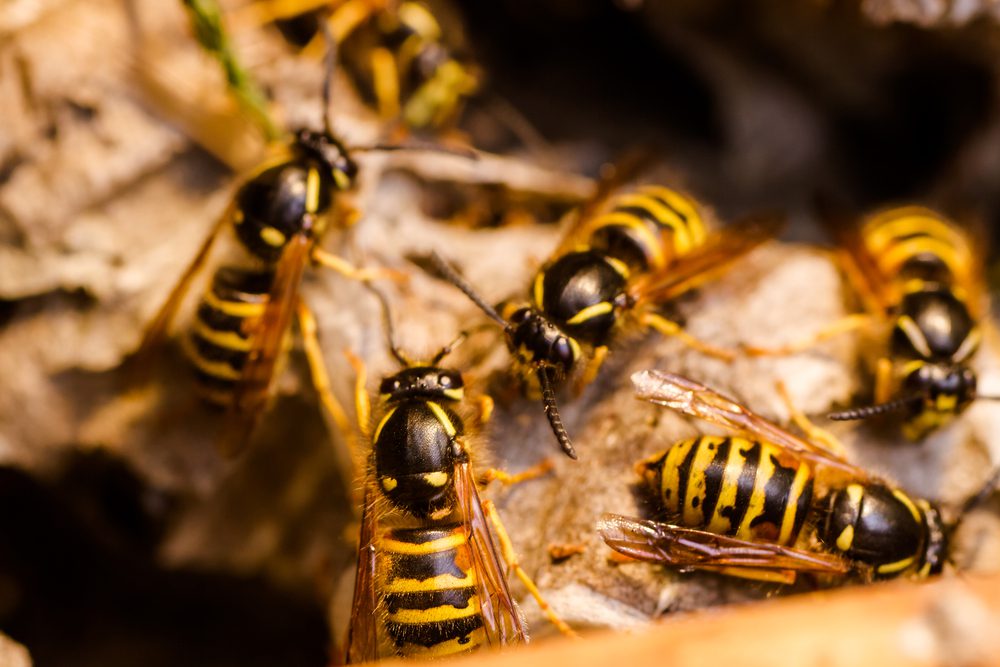
Contact Willard’s Pest Control for a pest control inspection and evaluation today 425-820-1980 or 509-962-2044.
About Willard’s Pest Control
Willard’s Pest Control Company was established in 1987 as a one-person family operation. Today, 32 years later, we are a growing family run exterminator company employing 30+ people for our pest control services. We specialize in all types of pest treatment services, including bed bugs, ants, cockroaches, and more.
We believe in providing safe, honest work to the Greater Puget Sound and Kittitas County communities and are actively involved in the Washington State Pest Management Association. Through this association, we work to promote professionalism and safety within the extermination industry.
Our service area includes Auburn, Federal Way, Kent, Renton, Tacoma, Woodinville, Seattle, Bellevue, Sammamish, Kirkland, Redmond, Issaquah, and more!


